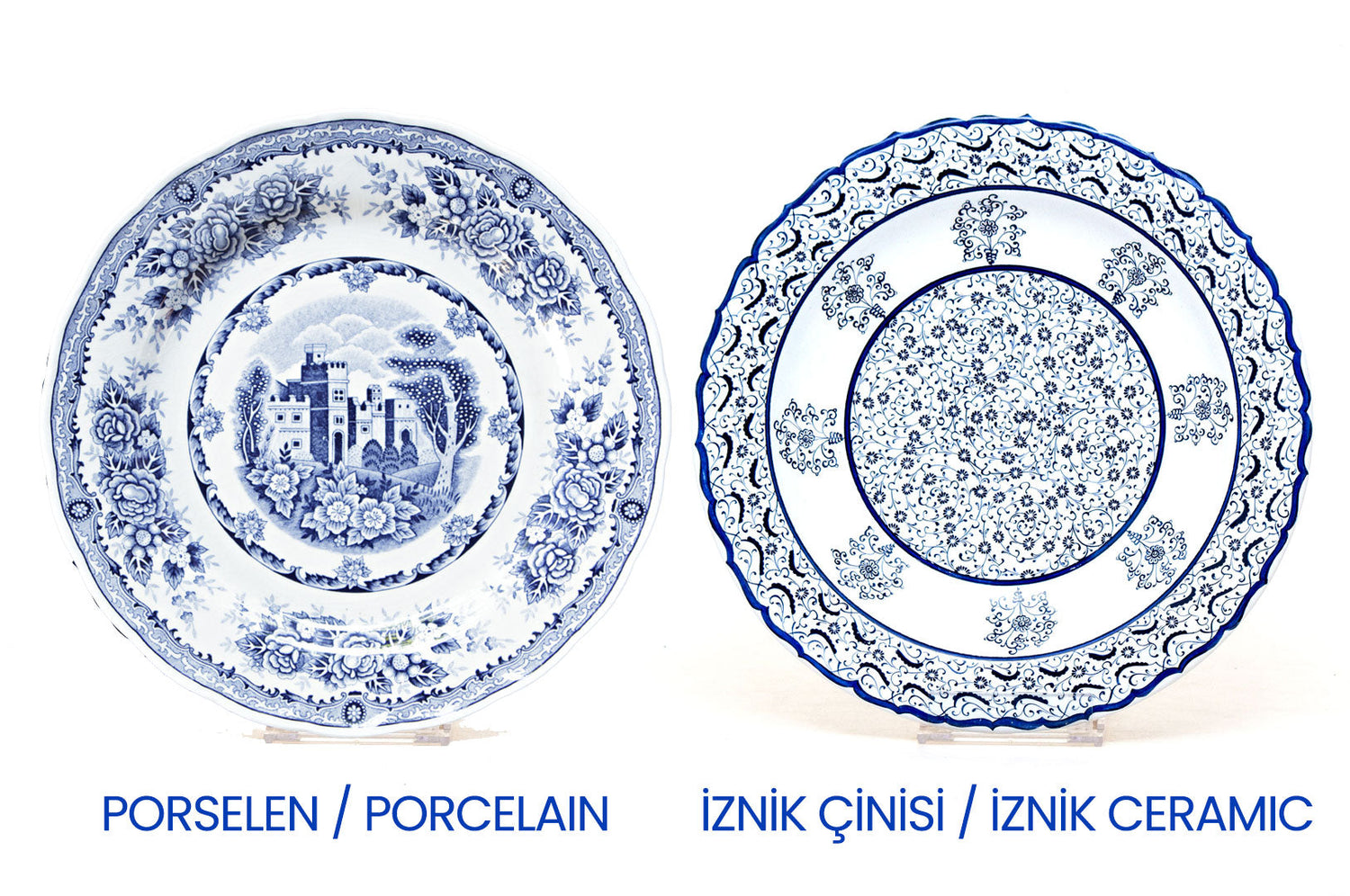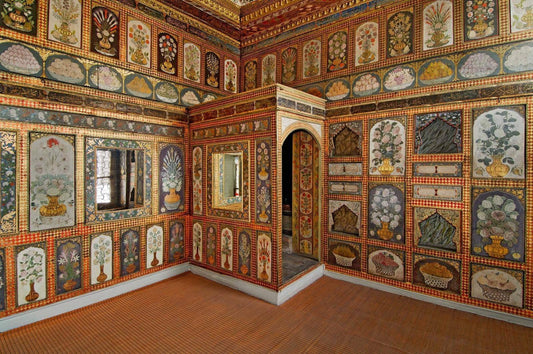Turkey is renowned worldwide for its tiles and ceramics. Our country's centuries-long history of tiles and ceramics not only represents a vibrant craft but also a significant industry thanks to industrial production. However, for years, porcelain and Iznik tiles have been frequently confused, sometimes leading to misinformation about Iznik tiles being either porcelain or faience. Let's explore the differences between these two ceramics, which are often compared but not entirely similar in structure or application.
Let's begin by understanding what ceramics is. Ceramics is the name given to utensils made from naturally occurring clay, a type of plastic clay that, when diluted, acquires the ability to bond and be shaped. The Greek word "keramos"—meaning "clay, clay, potter's earth, or earthenware vessel"—has been translated into various European languages as "keramik" or "ceramic."
Clay is what makes ceramics possible. When mixed with water, clay acquires a level of plasticity that allows it to be shaped. It is formed by the crumbling and disintegration of naturally occurring rocks, usually a mixture of silica, iron oxide, limestone, and mica, over millions of years due to factors such as water and wind.
Although porcelain is categorized as a type of ceramic, porcelain and ceramic have very different properties. Porcelain's raw materials are clay soil, quartz, and feldspar minerals, and it is fired at a higher temperature than ceramic (between 1200-1500 degrees Celsius). They differ from each other both in their production technique and raw materials. Ceramic is an opaque material, impermeable to light but less resistant to water. Porcelain, on the other hand, is used in items that are constantly in contact with water and must be transparent, such as cups and teapots. Porcelain is less durable than ceramic, so ceramic is preferred for various wall covering applications. Ceramic has a rougher texture than porcelain. This means that porcelain is preferred if a smooth texture is desired, and ceramic is preferred if a rough, slip-resistant texture is desired. Porcelain is more resistant to sudden temperature changes than ceramic. For example, a high-quality porcelain teapot will not be damaged by heat.
Iznik tiles contain a high percentage of quartz, glass powder, and clay. Quartz is the most important raw material for tile production and is a semi-precious mineral. While it is a ceramic that gives a porcelain effect, the production process and application are very different from porcelain. If porcelain is to be decorated, an overglaze decoration technique is used, meaning the decoration is applied after firing. Iznik tiles, on the other hand, use an underglaze decoration technique. The dyes used are derived from metal oxides, which is one reason why tiles remain intact for so many years. Tiles derive their vibrant, protected, deep, and striking beauty from the glaze (glass). Unlike porcelain, Iznik tiles are fired twice, and the firing temperature is around 950 degrees Celsius. Iznik tiles are also known as stone tiles. This is because quartz is present in four main layers, and the high percentage of quartz gives the tile its durability: the body, the coating, the paint, and the glaze. These layers must also be compatible with each other during firing. Otherwise, the products may crack or flake off after a while. Porcelain was primarily used in dinnerware, vases, and decorative items. İznik tiles were primarily used as wall hangings and were also produced as decorative items in later years.
To avoid confusion with porcelain, a completely different type of ceramic like Iznik tile, exhibited in world-renowned museums and highly sought after by art lovers, we've compiled the key differences. For more information about Iznik tile, be sure to check out our other blog posts ('Beauty Emerging from the Fire: Tile and Ceramics', Delphin Hotel Blog Post, 'What Are the Differences Between Ceramics and Porcelain?', Yurtbay Ceramic Blog Post, 'Turkish Arts 'Ceramics', Kültür A.Ş., pp. 1-2).




